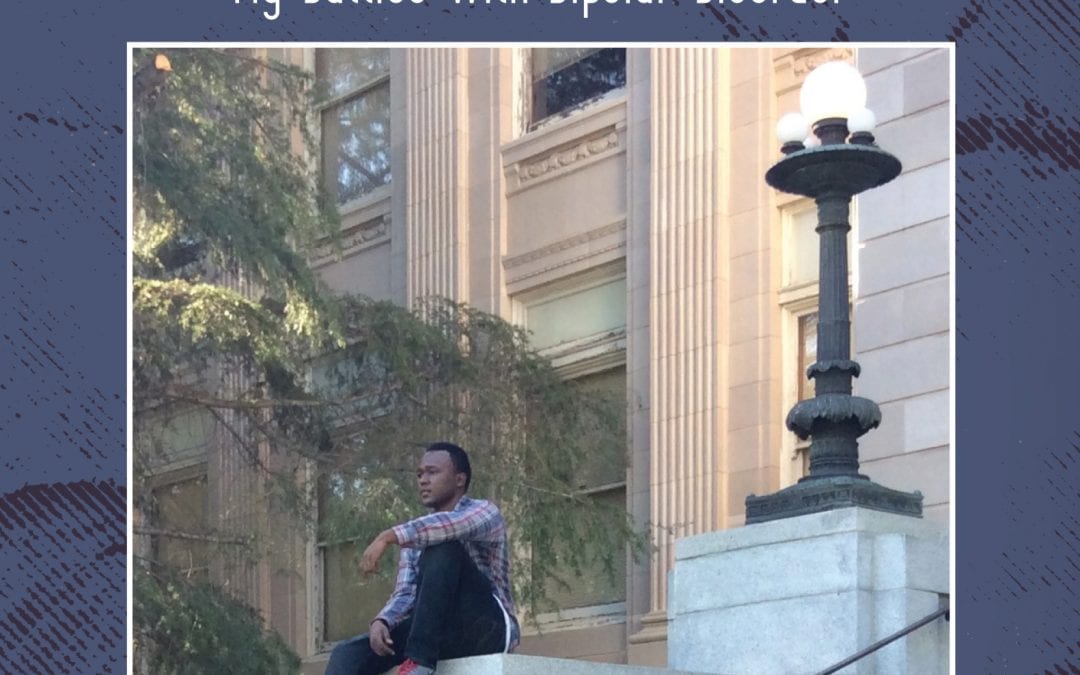By Michael Kinyanjui
Until my psychiatrist diagnosed me with bipolar disorder and prescribed medication, every aspect of my life was broken. I rarely talked to my family, and my friends were a distant memory. Worst of all was not knowing why everything was so screwed up. The one conclusion I reached was that it was my fault. It was my fault for getting arrested twice, and it was my fault for burning every bridge I’d ever created. I hated myself, and I hated being a burden on my family. I avoided every mirror in or out the house in order to keep from looking at myself. I knew once I saw the thing I had become, no inspirational video on YouTube would stop the inevitable end. As part of my recovery, I wrote my book Highest of Highs to Lowest of Lows: My Battles With Bipolar Disorder(EditPros LLC ISBN: 978-1-937317-42-0) in the hope of guiding other people who are suffering as I had.
My manic episodes were outrageous. From driving 120 miles an hour to being arrested in a different country – there was no stopping me! I emptied my bank account (of $60,000), drank daily like it was New Year’s Eve, and I did all this on two to three hours of sleep. When I slept, I was having these vivid dreams that were filled with positivity and hid mania’s true intentions. Once my brain crashed, all hell broke loose. Bill collectors kept calling. Different counties were sending emails to me for payments of speeding tickets, parking tickets, and so on. In addition, friends would avoid me because of something I said or did. The only thing that kept me sane was hard liquor. I was drinking from the time the sun rose, to when my body and brain tapped out. It was truly hell on Earth. The worst thing was knowing everything that happened was caused by my own doing, so getting help was out of the question.
Every time I thought of getting help, I was thwarted by a wave of nihilist thoughts that would flood my head, reminding me of everything I did during my mania . So, I decided nothing mattered, and death was the cure. I finally broke down when my father asked if I was okay. Tears just kept flowing. The next day I was taken to a psychiatrist and finally put on the proper medication. Thoughts of suicide went away, a sense of hope appeared and, surprisingly, I had an urgency to get a job. One day sitting in my room, for some reason, I wrote a whole page detailing my first arrest. Four months and about 50,000 words later, I went looking for a publisher.
Finding the right medication was a blessing. My only regret is not starting it in my adolescent years. Besides the help I gained from writing Highest of Highs to Lowest of Lows, I also wanted teens who may be suffering from bipolar disorder to read my story and seek help. My life as a teen was filled with anxiety attacks, mood swings, and days when I couldn’t get out of bed. I hate the fact there are young people out there going through hell, while adults blame it on puberty. It’s sad! A lot of adolescents will live with undiagnosed bipolar disorder and go through obstacles and hardships that functioning people wouldn’t dream of. How do you explain looking in the mirror and realizing you were a completely different person yesterday? Well, if word spread to younger people to seek help, they wouldn’t have to miss out on the good things in life.
Highest of Highs to Lowest of Lows documents my past with stories that people can relate to. It’s about new beginnings. It’s about leaving an unpredictable life and moving forward – learning how to love and making peace with things I can’t control. Although the book is about my life, the message I want to convey to people is “You’re not alone.” Whether you have a mental illness, or not, reach out to your family, a friend, or a colleague and say, “Hey, can we talk?” or something along those lines. With this experience behind me, I figure that it’s better to be vulnerable for a moment than to suffer endlessly.


